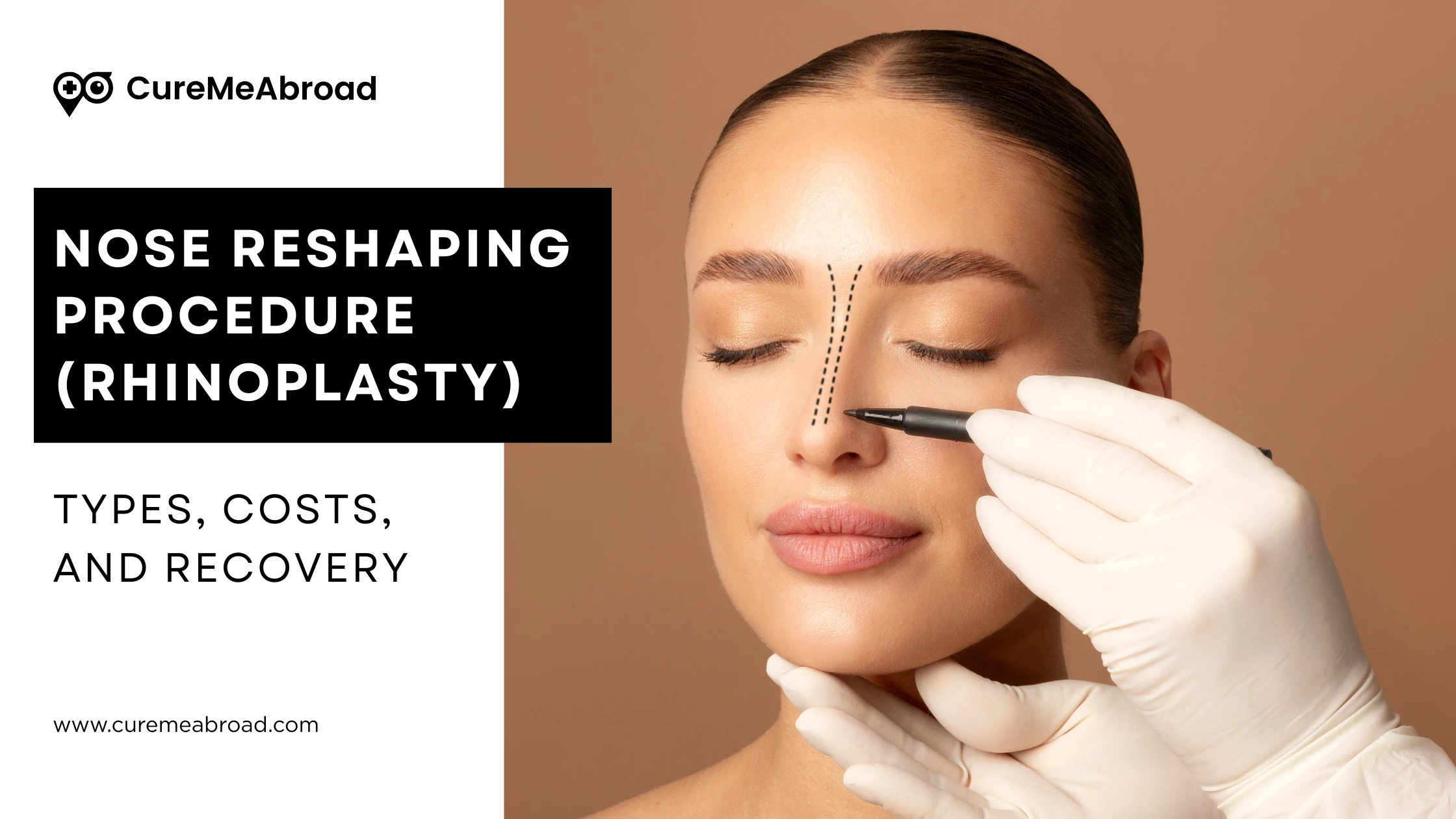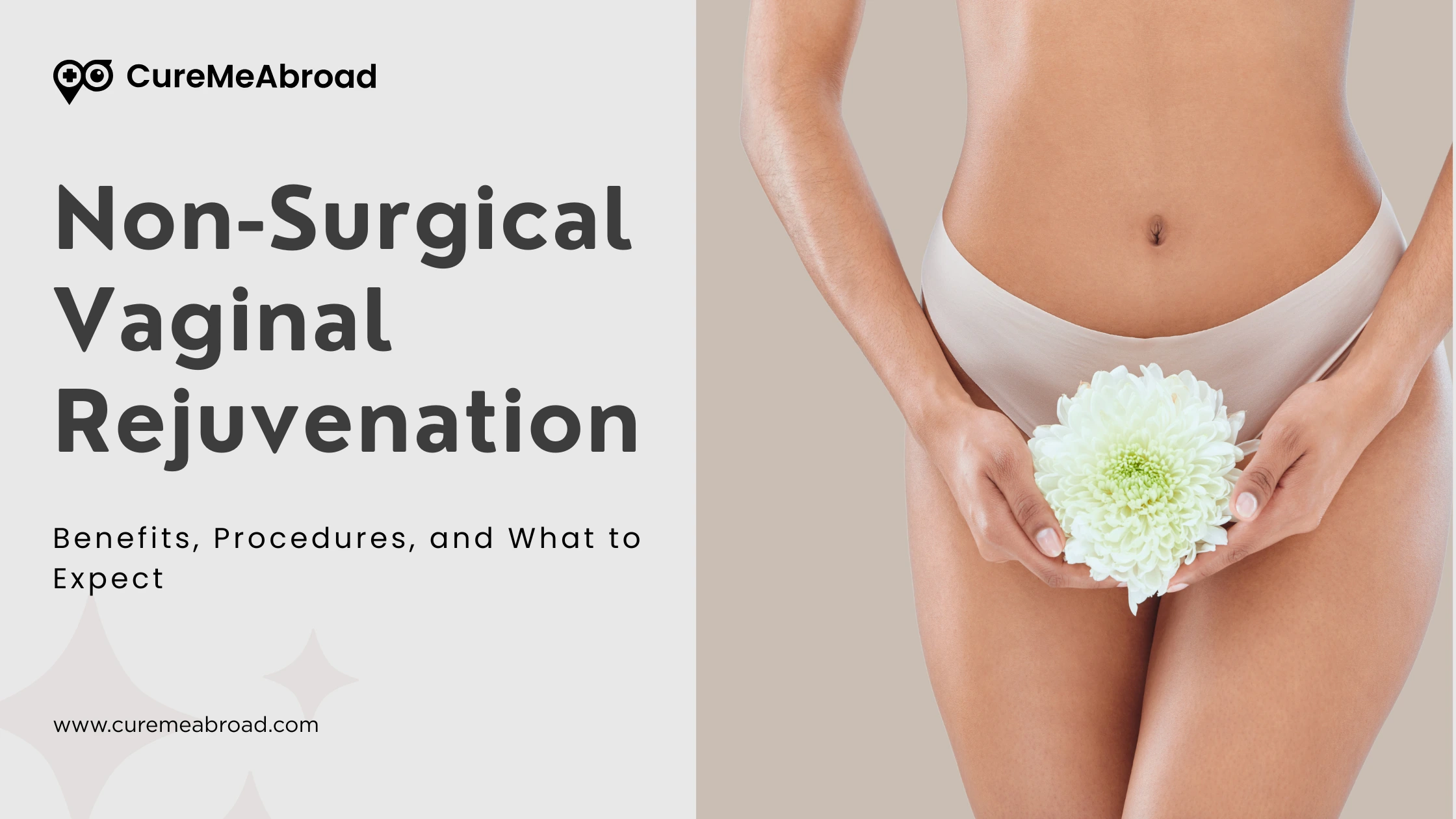Nose plays a key role in determining your overall facial structure and appearance. If you a feeling that your nose does not complement your facial features or if you have some underlying medical conditions that makes it difficult to breathe, considering a rhinoplasty is the best choice.
Rhinoplasty or nose job or nose surgery is a nose reshaping procedure that changes the size, shape and appearance of your nose for underlying aesthetic or medical reasons.It is a widely known fact that the top of the nose consists of bone while the bottom of the nose consists of cartilage. Rhinoplasty leads to an altered look of the nose by changes in either the bone; or the cartilage; or the skin of the nose; or all of the three. It make you look more elegant and confident which makes you look presentable in today’s world.
In this article we will discuss in detail about nose reshaping procedure, the types of procedures, its cost and recovery steps.
What is Rhinoplasty?
Rhinoplasty or nose reshaping surgery or nose job is a surgery that is used to change the appearance of one’s nose. It is a customizable surgery that can address a range of issues, from breathing-related functional problems to cosmetic ones. During the procedure, the surgeon may add grafts from other places (such the ear or rib) to enlarge the nose or remove extra bone or cartilage to make it smaller. Airflow can also be improved by straightening the septum, which is the wall between the nostrils, if needed. Depending on its complexity, the full process often takes one to three hours.
Who need to perform a Rhinoplasty?
Rhinoplasty is opted by individuals who are not satisfied with the way their nose looks or have breathing difficulties due to underlying medical conditions. Some of the reasons why people chose this nose reshaping procedure is :
- If their nose looks too big or too small
- If they have drooping nasal tip
- If they have difficulty in breathing due to deviated septum
- If they have asymmetric nose due to injusr or congenital defects
Not everyone is suitable for a rhinoplasty. They should be in overall good health and have realistic expectations. People with certain type of medical conditions like hypertension, diabetes etc. should consult a doctor and may need to undergo other alternatives. People who smoke are also not idea for this procedure.
Types of Nose Reshaping Procedures
Rhinoplasty comes in a variety of forms, each designed to meet certain requirements:
- Open Rhinoplasty: In order to improve access to the nasal structures, an open rhinoplasty entails making a little incision on the columella, or tissue between the nostrils.
- Closed Rhinoplasty: No apparent external scars are left behind because all incisions are made inside the nose.
- Revision Rhinoplasty: The purpose of a revision rhinoplasty is to address problems from an earlier procedure.
- Non-Surgical Rhinoplasty: Also referred to as "liquid rhinoplasty," this procedure uses dermal fillers to make subtle cosmetic adjustments to the nose without the need for surgery.
- Ethnic Rhinoplasty: This method makes the required alterations while honoring and maintaining ethnic traits.
- Ultrasonic Rhinoplasty: This technique precisely reshapes nasal bones with minimal harm by using ultrasonic energy.
What to Expect?
Preparing for the Procedure
There are several steps taken in preparing for rhinoplasty:
Discuss your medical history and specific goals with your surgeon. The surgeon will examine your nose structure during the physical check-up and recommend the best approaches. Follow any dietary limitations or medication instructions provided by your surgeon.
Having a rhinoplasty:
- Anesthesia: Either general anesthesia or local anesthesia and sedation, depending on the individual patient's requirement.
- Incision: Incisions are done according to the technique (open or closed).
- Reshaping: If required, the surgeon alters the nasal form.
- Closure: Splints might be employed for support, while incision closure is done with sutures.
Recovery After Surgery Includes:
- Pain management: Prescription pain medication is generally enough to control mild pain.
- Hospital Stay: A few patients might require an overnight hospital stay, but most are discharged on the same day.
- Care Instructions: No strenuous activity should be undertaken for a few weeks; follow-up visits will be employed to monitor healing.
During a nose reshaping surgery, the normal recovery time involves:
- Initial Recovery: Swelling and bruising beneath the eyes are usual within the initial two weeks of the process of healing, but it will begin to subside in a few days' time.
- Complete Recovery (6 months): The final effects may not be observed until the edema has completely disappeared because thorough healing is time-consuming.
Cost of Rhinoplasty
Let us look at the cost of nose reshaping procedure in different parts of the world.
| Country | Cost of Rhinoplasty |
|---|---|
| United States | $6,000 – $15,000 |
| United Kingdom | $5,000 – $12,000 (£4,000 – £10,000) |
| India | $3,000 – $4,500 (₹2.5 - ₹3.5 lakhs) |
| Thailand | $2,000 – $4,500 |
| South Korea | $3,000 – $8,000 |
| Turkey | $2,000 – $6,000 |
The cost of the surgery is determined by the expertise of the surgeon, the location, the type of procedure, hospital amenities, and post operative care. If the nose reshaping procedure is performed for aestetic purposes there are chances that insurance might not cover it. However for medical resoans insurance benefits can be availed.
Risks and Complications
Just like any cosmetic procedure, nose reshaping procedure also comes with certain risks. These are:
- Breathing difficulties through the nose
- Constant numbness in the nose and surrounding area
- The potential for a nose that appears uneven
- Persistent pain, discolouration, or swelling
- Perforated Septum which might need additional surgery
Selecting a skilled and expert ENT surgeon minimises these risks and helps in a smooth recovery.
Rhinoplasty or nose reshaping procedure is one of the most satisfying cosmetic procedure that is life altering and not only enhancesyour confidence and self esteem but also improves your breathing. It remains one of the widely chosen cosmetic procedure for enhancing aesthetic appearance. You can attain a naturally balanced and self-assured appearance that accentuates your distinct face structure with the correct surgeon, reasonable expectations, and appropriate aftercare.
With right surgeon and techniques you can achieve a realistic and satisfying look which enhances your confidence and balanced facial structure.
Frequently Asked Questions
Does having a rhinoplasty hurt?
After surgery, the majority of patients have little discomfort, which is readily controlled with the help of recommended painkillers. During the first few days, you can experience slight discomfort or pressure in your nose.
How long does it take to recover from a nose reshaping procedure?
Swelling may persist for several months after the initial recovery period of one to two weeks. It takes six to twelve months to see the final results.
Can breathing issues be corrected by rhinoplasty?
Yes. To maximize airflow, structural issues such as a deviated septum or fallen nasal valve can be corrected by functional rhinoplasty or septorhinoplasty.
How does non-surgical rhinoplasty differ from surgical rhinoplasty?
Non-surgical rhinoplasty uses dermal fillers to achieve temporary changes without surgery, whereas surgical rhinoplasty restructures bone and cartilage permanently.
How long after a nose recontouring procedure can we notice the effects?
Once the swelling subsides within a few weeks, you will see noticeable improvement, but it can take as long as a year for the full impact of rhinoplasty to become apparent. Once the nasal tissues settle and the swelling disappears completely, this gradual refining occurs. The outcome will slowly improve for a harmonious and natural appearance, hence patience is necessary.









